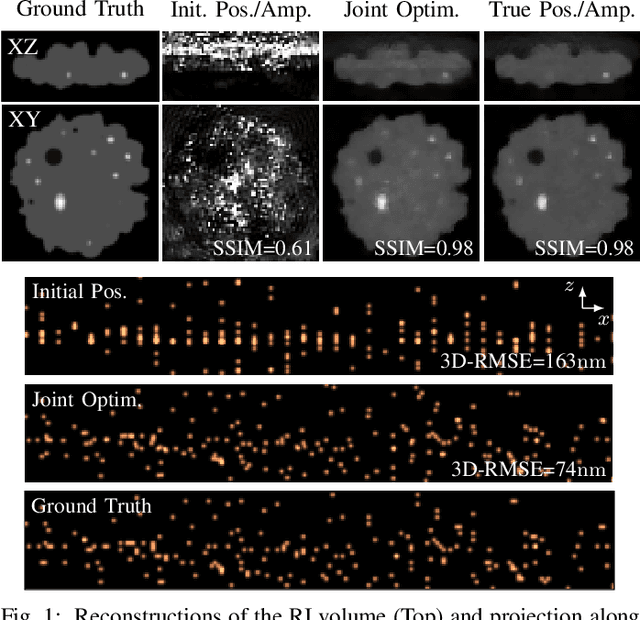Ferréol Soulez
CRAL
Open loop calibration and closed loop non-perturbative estimation of the lateral errors of an adaptive optics system: examples with GRAVITY+ and CHARA experimental data
Oct 09, 2024



Abstract:Performances of an adaptive optics (AO) system are directly linked with the quality of its alignment. During the instrument calibration, having open loop fast tools with a large capture range are necessary to quickly assess the system misalignment and to drive it towards a state allowing to close the AO loop. During operation, complex systems are prone to misalignments (mechanical flexions, rotation of optical elements, etc.) that potentially degrade the AO performances, creating a need for a monitoring tool to tackle their driftage. In this work, we first present an improved perturbative method to quickly assess large lateral errors in open loop. It uses the spatial correlation of the measured interaction matrix of a limited number of 2D spatial modes with a synthetic model. Then, we introduce a novel solution to finely measure and correct these lateral errors via the closed loop telemetry. Non-perturbative, this method consequently does not impact the science output of the instrument. It is based on the temporal correlation of 2D spatial frequencies in the deformable mirror commands. It is model-free (no need of an interaction matrix model) and sparse in the Fourier space, making it fast and easily scalable to complex systems such as future extremely large telescopes. Finally, we present some results obtained on the development bench of the GRAVITY+ extreme AO system (Cartesian grid, 1432 actuators). In addition, we show with on-sky results gathered with CHARA and GRAVITY/CIAO that the method is adaptable to non-conventional AO geometries (hexagonal grids, 60 actuators).
Optical Diffraction Tomography Meets Fluorescence Localization Microscopy
Jul 18, 2023
Abstract:We show that structural information can be extracted from single molecule localization microscopy (SMLM) data. More precisely, we reinterpret SMLM data as the measures of a phaseless optical diffraction tomography system for which the illumination sources are fluorophores within the sample. Building upon this model, we propose a joint optimization framework to estimate both the refractive index map and the position of fluorescent molecules from the sole SMLM frames.
Gauging diffraction patterns: field of view and bandwidth estimation in lensless holography
Mar 22, 2021



Abstract:The purpose of this work is to provide theoretically grounded assessment on both the field-of-view and the bandwidth of a lensless holographic setup. Indeed, while previous works have presented results with super-resolution and field-of-view extrapolation, there is no well established rules to determine them. We show that the theoretical field of view can be hugely large with a spatial-frequency bandwidth only limited by the wavelength leading to an unthinkable number of degrees of freedom. To keep a realistic field of view and bandwidth, we propose several practical bounds based on few setup properties: namely the noise level and the spatio-temporal coherence of the source.
 Add to Chrome
Add to Chrome Add to Firefox
Add to Firefox Add to Edge
Add to Edge